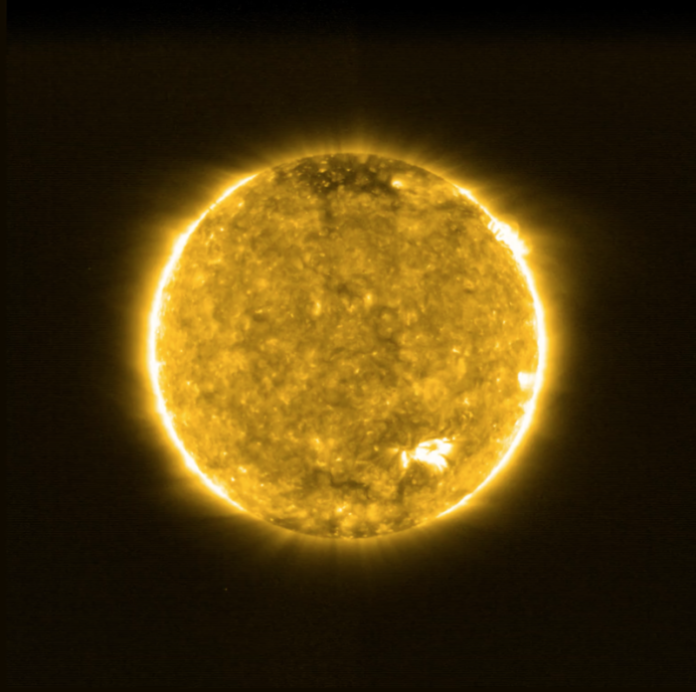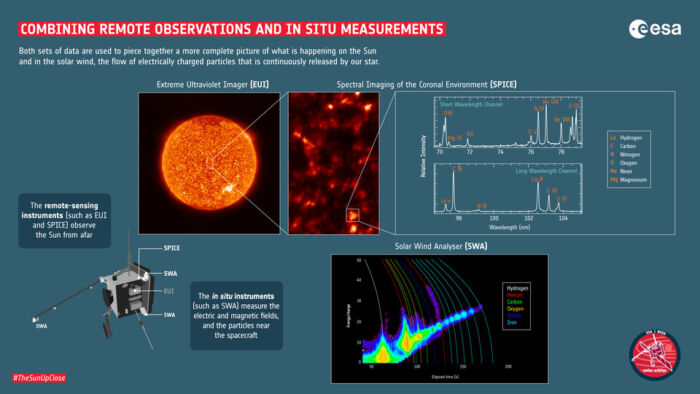
The surface of the Sun is dotted with countless eruptions reminiscent of bonfires, never seen before and revealed by the images sent by the Solar Orbiter probe, managed by the European Space Agency (ESA) in collaboration with NASA. Launched on February 10, the mission is the most ambitious ever directed to the Sun. It captured the images with its ten instruments, three of which Italian, made by the Italian Space Agency (ASI), the National Institute of Astrosification (INAF), Thales Alenia Space (Thales-Leonardo). University of Florence and Genoa.
“These are only the first images and we can already see interesting new phenomena,” says Daniel Müller, ESA’s Solar Orbiter Project Scientist. “We didn’t really expect such great results right from the start. We can also see how our ten scientific instruments complement each other, providing a holistic picture of the Sun and the surrounding environment.”

The space mission will provide us with interesting data on the Sun and its activity, but it will also tell us about the Earth. To protect and safeguard our planet it is essential to know the dynamics that regulate it and that bind it to the other planets of the solar system and to the Sun itself. From space, in fact, an understanding of the dynamics of some phenomena such as climate change can be obtained, which we must necessarily stem to preserve the terrestrial ecosystem.
Solar Orbiter, launched on 10 February 2020, carries six remote-sensing instruments, or telescopes, that image the Sun and its surroundings, and four in situ instruments that monitor the environment around the spacecraft. By comparing the data from both sets of instruments, scientists will get insights into the generation of the solar wind, the stream of charged particles from the Sun that influences the entire Solar System.
The unique aspect of the Solar Orbiter mission is that no other spacecraft has been able to take images of the Sun’s surface from a closer distance.
The campfires shown in the first image set were captured by the Extreme Ultraviolet Imager (EUI) from Solar Orbiter’s first perihelion, the point in its elliptical orbit closest to the Sun. At that time, the spacecraft was only 77 million km away from the Sun, about half the distance between Earth and the star.

“The campfires are little relatives of the solar flares that we can observe from Earth, million or billion times smaller,” says David Berghmans of the Royal Observatory of Belgium (ROB), Principal Investigator of the EUI instrument, which takes high-resolution images of the lower layers of the Sun’s atmosphere, known as the solar corona. “The Sun might look quiet at the first glance, but when we look in detail, we can see those miniature flares everywhere we look.”
The scientists do not know yet whether the campfires are just tiny versions of big flares, or whether they are driven by different mechanisms. There are, however, already theories that these miniature flares could be contributing to one of the most mysterious phenomena on the Sun, the coronal heating.
“We are all really excited about these first images – but this is just the beginning,” adds Daniel. “Solar Orbiter has started a grand tour of the inner Solar System, and will get much closer to the Sun within less than two years. Ultimately, it will get as close as 42 million km, which is almost a quarter of the distance from Sun to Earth.”



































